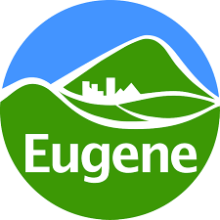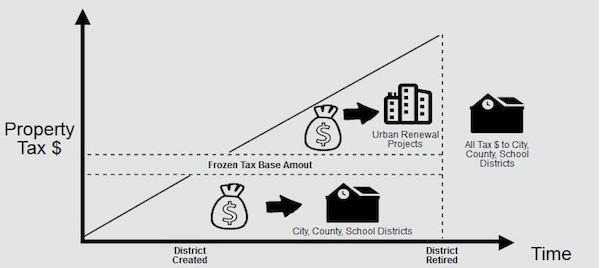
Fast, affordable Internet access for all.

For the past year, Eugene has worked on a pilot project to bring high-quality connectivity to businesses in its downtown core. Now that community leaders and businesses have seen how a publicly owned network can help revitalize the city’s commercial center, they want to expand it.
The Proof Is In The Pilot
The project is a collaboration between the city of Eugene, the Lane Council of Governments (LCOG), and the Eugene Water and Electric Board (EWEB). As we reported last year, each entity contributed to the project. EWEB owns the infrastructure and uses its electrical conduit for fiber-optic cable, reducing the cost of deployment. EWEB also has the expertise to complete the installation, as well as manage and operate the infrastructure. They lease dark fiber to private Internet service providers (ISPs) to encourage competition over the shared public infrastructure.
The pilot project brought Gigabit (1,000 Megabits per second) connectivity to four buildings in the pilot area. Vacancy rate for those four building is at zero while typical vacancy rate in Eugene is 12 percent. Matt Sayre of the Technology Association of Oregon (TAO) notes that speeds in one of the buildings, the Broadway Commerce Center, increased by 567 250 percent while costs dropped by 60 40 percent. TAO joined the other pilot project partners in 2015.
The Search For Funding
The expanded project will cost approximately $4 million to complete. In June, the City Council approved a measure to make the project eligible for Urban Renewal Funds. Urban Renewal is another label for what is also known as Tax Increment Financing (TIF), which has been used in other places for fiber infrastructure. Bozeman, Montana; Valparaiso, Indiana; and Rockport, Maine, all used Urban Renewal or TIF to help finance their builds.
Eugene provides a helpful explanation for Urban Renewal on their website; they describe it in three steps:
Step 1 - The District is created . The value of ALL the properties inside the district is calculated. This becomes the frozen base amount of property tax for the area.
Step 2 - Redevelopment and Improvements. Public and private investments generate improvements. As property values increase, all new tax revenue above the frozen base amount go to the urban renewal fund to reinvest in the area.
Step 3 - District is retired. Once the City Council is finished investing in the area and the debt of the district has been repaid, the district is retired. Property taxes are distributed among the taxing districts.

The city will also apply for federal Economic Development Assistance Program Investment grant funds from the U.S. Department of Commerce. The grant they pursue requires a 50 percent match which will include Urban Renewal Funds and the value of EWEB’s existing electrical infrastructure. In July, Eugene and its partners submitted a pre-application and the EDA invited them to submit a full application; they hope to obtain approximately $2.1 million.
Residents, Too!
Businesses are not the only ones expected to benefit form the community investment. The expanded project area also includes several multi-dwelling units (MDUs), and the network will help improve the city’s free Wi-Fi:
Anne Fifield with the city of Eugene says three low-income housing projects are in the service area, and she has been in communication with the building managers. One of the goals of Eugene’s broadband plan, she says, is to “bridge the digital divide” and bring internet access to low-income households. An added bonus, she says, is users of the city’s free wifi should eventually see an increase in speeds.
West Des Moines, Iowa is making steady progress on a $60 million open access fiber-optic conduit system to expedite the delivery of affordable fiber citywide. And they’re doing it with the help of Google Fiber, which has slowly started to reverse course after the company’s 2016 decision to lay off hundreds of staff and freeze most meaningful expansion.
Joined by an array of leading broadband experts, infrastructure investment fund managers, institutional investors, private equity, and venture capitalists will gather in the nation’s capital next week for a day-long in-person conference to discuss and explore the digital infrastructure and investment asset profile required to support a 21st century information economy.
